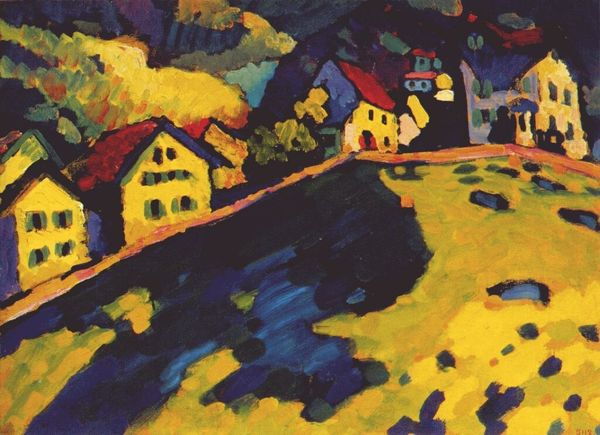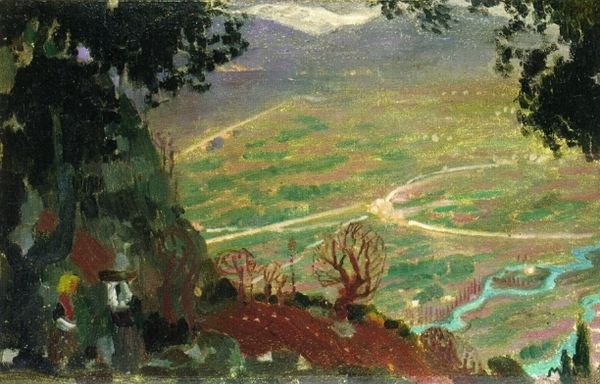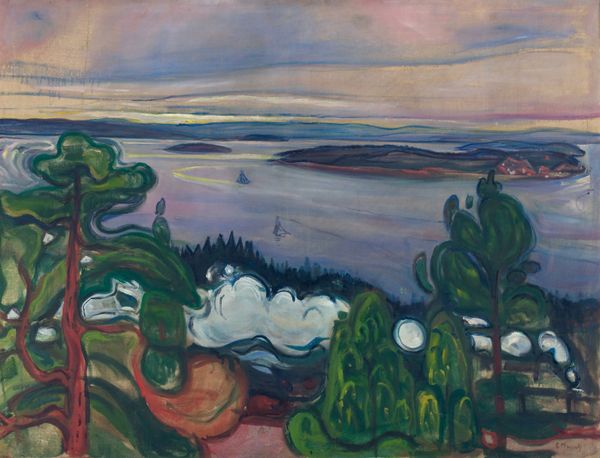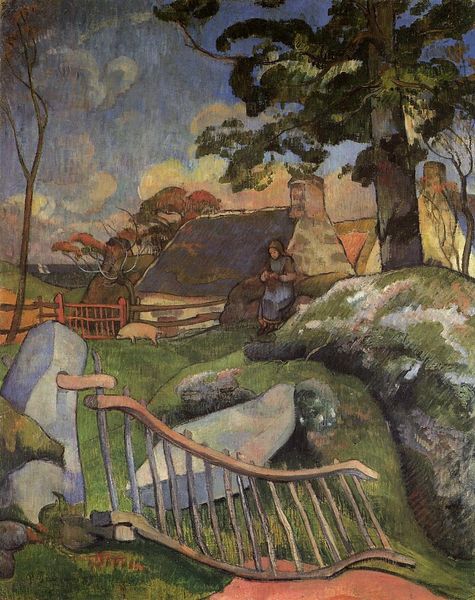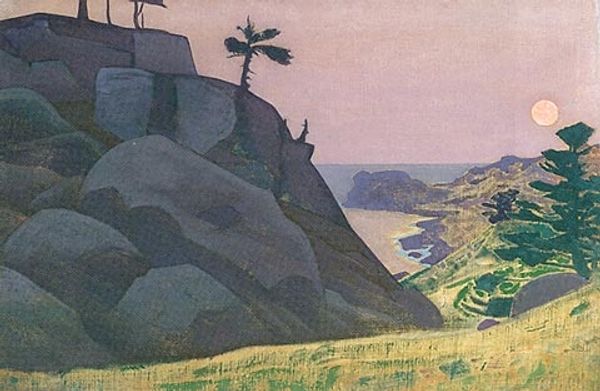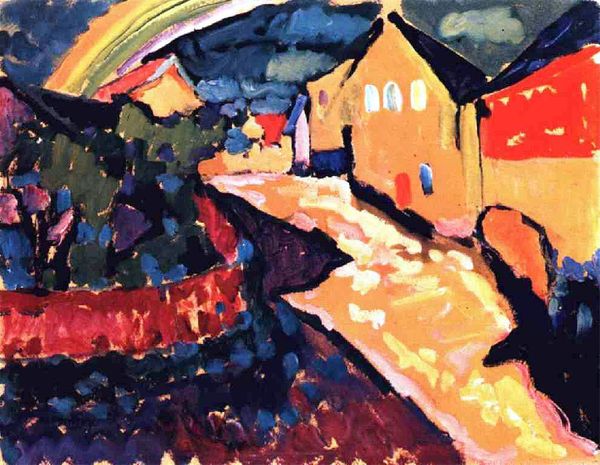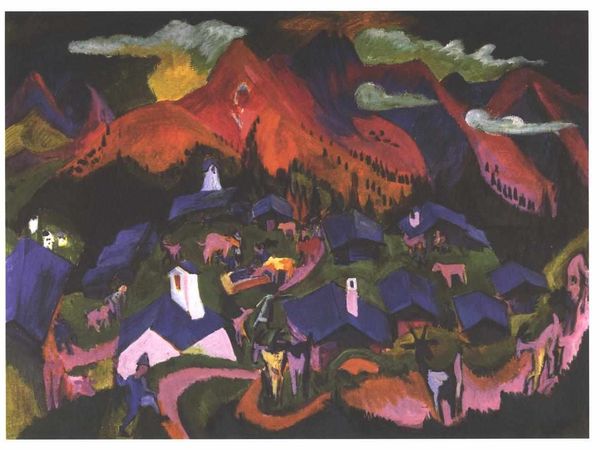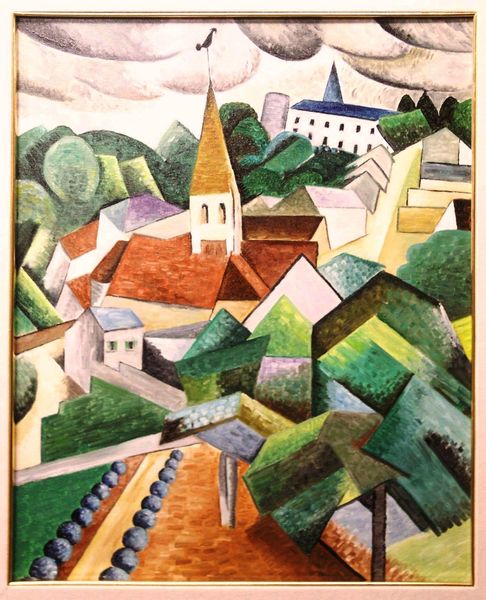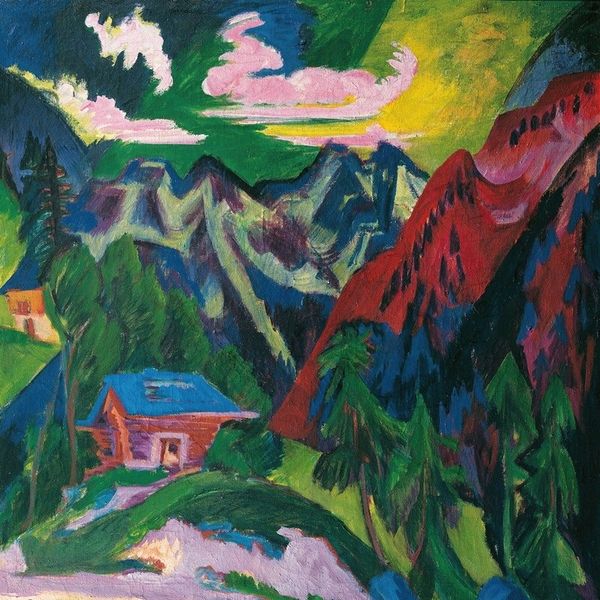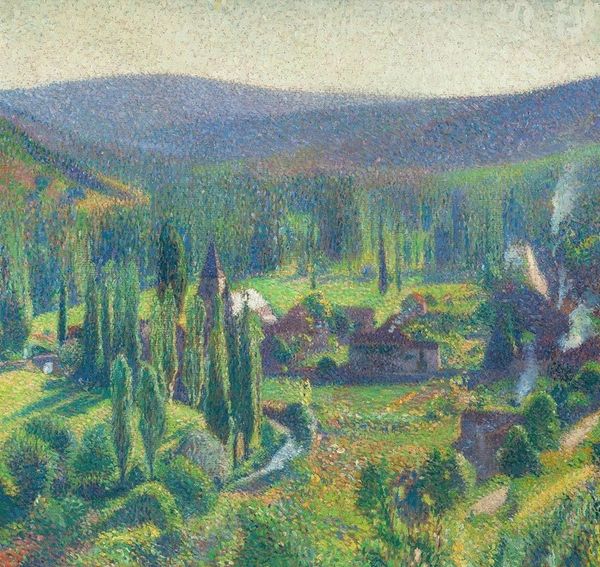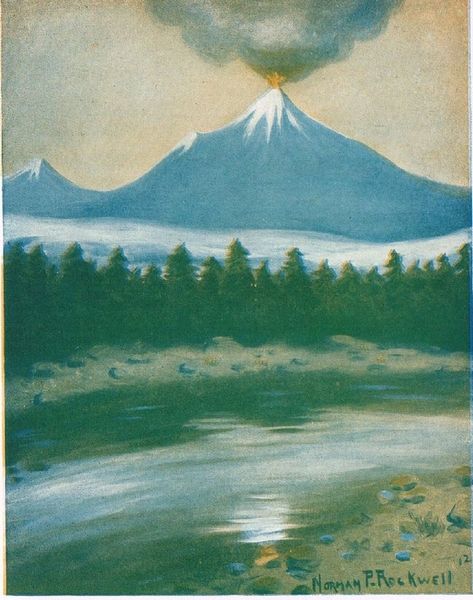
plein-air, oil-paint
#
plein-air
#
oil-paint
#
landscape
#
german-expressionism
#
oil painting
#
expressionism
#
cityscape
Dimensions: 60.5 x 55 cm
Copyright: Public domain
Editor: Here we have August Macke's "Landscape on the Teggernsee with a reading man" from 1910, an oil painting done en plein-air. The composition strikes me as so clearly organized, almost geometric in the way it leads your eye. What compositional elements stand out to you? Curator: Observe how Macke deploys distinct planes within this landscape. Notice the almost palpable separation between the foreground figure, the meandering path bisecting the middle ground, and the distant town nestled near the lake. Ask yourself: how does this layering influence your reading of depth? Editor: The figure down near the bottom appears to be drawing or painting as well; how does this mirrored activity affect how we view the painting? Curator: An astute observation. The painter-observer at the bottom serves as a structural parallel to our act of viewing. The mirrored artistic production becomes a central visual concept—an act of translating experience. What, then, is being translated? Consider the interplay between color and form: the juxtaposition of the dark greens in contrast to the houses. Is the artist portraying a landscape, or is he arranging elements within a self-contained visual system? Editor: That's a helpful way to see the intentionality behind the choices Macke made. I guess I hadn't considered how those elements create a unified structure, more than just a representation of a scene. Curator: Exactly. This is why close scrutiny of pictorial organization is critical. These choices influence our emotional engagement, but are also important when decoding how structure defines this work. Editor: I see so much more now after thinking about Macke’s arrangement of forms and colours. Curator: Indeed, considering these relations can enrich your perspective substantially.
Comments
No comments
Be the first to comment and join the conversation on the ultimate creative platform.
